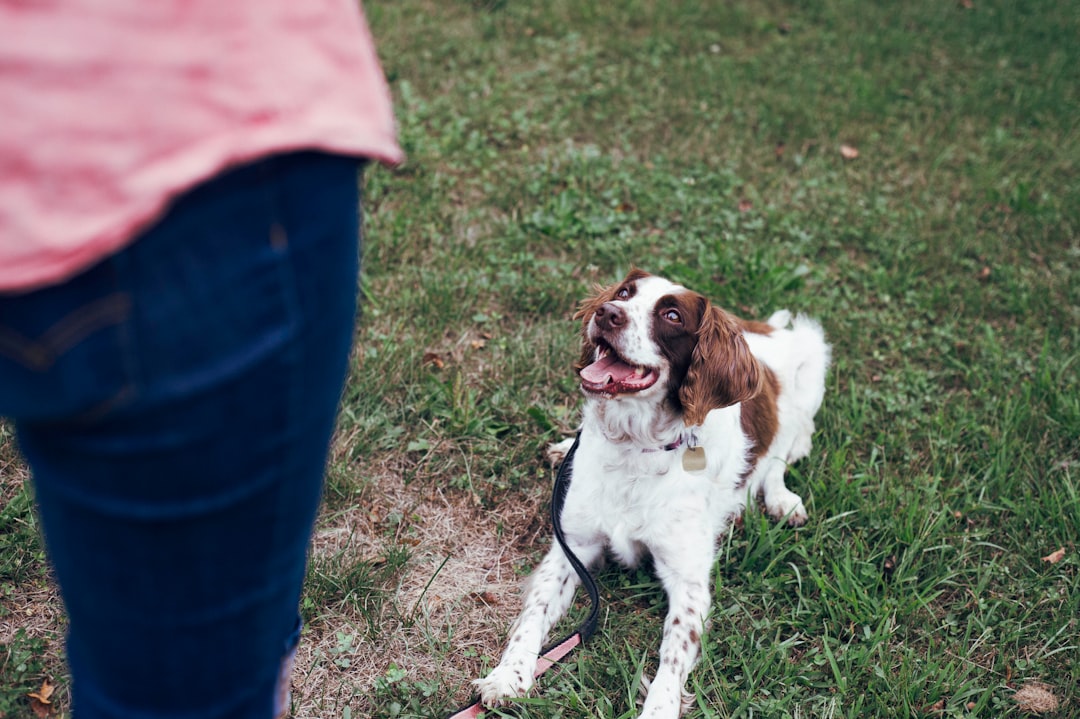Mastering Pack Leadership: Building Trust and Cooperation with Your Dog
The article discusses the importance of pack leadership in dogs, highlighting the benefits of establishing clear communication, consistency, and positive reinforcement to promote obedience, reduce anxiety, and strengthen the bond between dogs and their owners.

Introduction to Pack Leadership in Dogs
Pack leadership is a fundamental concept in the realm of dog training, focusing on the establishment of authority and structure within the relationship between dogs and their human companions. This concept transcends the outdated notions of dominance and subjugation, instead emphasizing clear communication, boundary setting, and the consistent application of training methods. Such an approach is designed to cultivate an environment of obedience, security, and psychological well-being for the canine. By adopting the role of a pack leader, owners are tasked with guiding their dogs through the complexities of human expectations while ensuring their innate needs are met.
The importance of pack leadership is underscored by its direct impact on a dog’s behavior, anxiety levels, and the overall strength of the bond between dog and owner. A dog that perceives its owner as a confident, fair, and consistent leader is more likely to exhibit a sense of security, demonstrate reduced anxiety-related behaviors, and show a greater willingness to comply with commands. For example, simple practices such as maintaining a calm and assertive demeanor during walks, consistently rewarding positive behavior, and setting clear and consistent rules around the home can reinforce the owner’s role as the pack leader, leading to a happier and more well-adjusted dog. These principles of pack leadership not only improve the immediate relationship between dog and owner but also contribute to the long-term well-being and societal integration of the dog [2].
The Evolution of Pack Leadership Theories
The understanding of pack leadership and dog training methodologies has undergone significant transformation over the years, moving away from the outdated dominance models that were once prevalent. Initially, training paradigms were deeply rooted in the notion of establishing an alpha role, drawing parallels with the behavior observed in captive wolf packs. This perspective suggested that to achieve obedience and control, humans needed to assert canine dominance over their dogs, mimicking the alpha wolf’s role within the pack. However, this approach was founded on a fundamental misunderstanding of wolf behavior, which was later clarified by studies showing that wild wolf packs operate more like family units, with roles driven by cooperation rather than coercion.
This shift in understanding was significantly influenced by the work of respected researchers like Sophia Yin and Colonel Konrad Most, who advocated for training methods that prioritize mutual respect, clear communication, and positive reinforcement. Their research debunked the necessity of dominance in dog training, instead highlighting the effectiveness of leadership that focuses on guidance and structure. Such modern theories of pack leadership emphasize the importance of building a relationship based on trust and understanding, rather than fear and submission. For instance, rather than using force to assert control, modern training techniques encourage rewarding desired behaviors, which not only fosters a positive relationship but also promotes a more willing compliance from the dog. This evolution in pack leadership theories underscores a broader recognition of the need for humane, ethical approaches to dog training that respect the animal’s natural instincts and social dynamics.
 Establishing Modern Pack Leadership
Establishing Modern Pack Leadership
The principles of modern pack leadership diverge significantly from the erstwhile dominance-based models, focusing instead on the creation of a respectful and cooperative relationship between dogs and their owners. This contemporary approach emphasizes the importance of guidance, structure, and particularly, positive reinforcement as foundational elements in training and daily interactions [3]. For instance, teaching a dog to patiently wait before meals – not through intimidation but by rewarding calm behavior – effectively demonstrates leadership while fostering mutual respect. Such methods signal to the dog that their owner is a dependable source of guidance, capable of providing clear and consistent boundaries in a manner that is both understandable and reassuring.
Moreover, establishing oneself as a pack leader today requires an insightful understanding of canine behavior and communication. It’s about recognizing the subtle cues dogs use to express discomfort, confusion, or readiness to learn, and responding in ways that affirm your role as their guide and protector. This empathetic approach to training, which might include the use of clicker training or treat rewards to encourage desired behaviors, stands in stark contrast to the forceful techniques of the past. By consistently applying these modern strategies, owners can build a strong foundation of trust and cooperation with their dogs, paving the way for a harmonious and fulfilling relationship. This nuanced understanding and application of pack leadership are essential for addressing and redirecting undesirable behaviors, ultimately ensuring the well-being and happiness of both dogs and their human companions.
 Addressing Common Behavior Problems Through Pack Leadership
Addressing Common Behavior Problems Through Pack Leadership
Addressing common behavior problems in dogs, including issues like excessive barking, aggression, and separation anxiety, often involves a thorough examination of the pack dynamics at play. Many of these issues stem from a dog’s confusion about their role within the pack or a lack of clear leadership from their human counterparts. By establishing oneself as a consistent and fair pack leader, an owner can effectively communicate what behaviors are acceptable and which are not. For example, a dog that incessantly barks at every passerby might be doing so out of a perceived duty to protect its territory. Through consistent leadership, the owner can teach the dog that not every outsider is a threat, using positive reinforcement to reward moments of calmness and silence.
Moreover, addressing more complex behavior problems like aggression or separation anxiety requires not only consistent leadership but also an understanding of the underlying causes of these behaviors. Aggression, for instance, can often be a response to fear or a lack of socialization. By establishing pack leadership, an owner can better guide their dog through socialization processes, gradually exposing them to new experiences in a controlled and positive manner. This approach helps the dog learn to respond to potentially fear-inducing situations with calm curiosity rather than aggression. Similarly, for a dog suffering from separation anxiety, establishing a secure and predictable pack structure can help mitigate stress. This might involve training routines that reward calm independence, thereby reassuring the dog that being alone for certain periods is safe and that their pack leader will return. Through these consistent and positive leadership techniques, behavior problems can be addressed at their root, fostering a healthier and happier relationship between dogs and their owners.
 The Role of Consistency and Positive Reinforcement
The Role of Consistency and Positive Reinforcement
 In the realm of effective dog training and establishing a harmonious pack leadership, the principles of consistency and positive reinforcement are paramount. Consistency in training and behavior expectations establishes a clear framework of rules for the dog, which is essential for their understanding and obedience. Without consistency, dogs can become confused about what is expected of them, leading to inconsistent behavior and stress for both the dog and the owner. For instance, if a dog is allowed on the furniture on some days but reprimanded for the same action on others, it struggles to understand the rules and may exhibit anxiety or unwanted behaviors.
In the realm of effective dog training and establishing a harmonious pack leadership, the principles of consistency and positive reinforcement are paramount. Consistency in training and behavior expectations establishes a clear framework of rules for the dog, which is essential for their understanding and obedience. Without consistency, dogs can become confused about what is expected of them, leading to inconsistent behavior and stress for both the dog and the owner. For instance, if a dog is allowed on the furniture on some days but reprimanded for the same action on others, it struggles to understand the rules and may exhibit anxiety or unwanted behaviors.
Positive reinforcement, on the other hand, is a method that rewards desirable behaviors, thereby encouraging the dog to repeat them. Techniques such as clicker training, treats, and verbal praise are effective tools in reinforcing good behavior. Unlike outdated dominance-based methods that focus on punishment, positive reinforcement builds a foundation of trust and mutual respect between the dog and the owner. When a dog understands that sitting on command or walking calmly on a leash results in positive outcomes like treats or affection, it is more likely to repeat these behaviors willingly. This method not only strengthens the bond between the dog and its owner but also promotes a positive learning environment, making training sessions something the dog looks forward to rather than fears [2]. Consistent application of these techniques reinforces the pack leadership structure, ensuring that the dog understands its place within the family unit and behaves in a manner that is both respectful and appropriate.
Debunking Myths and Misconceptions
 The concept of physical dominance and the alpha dog role as necessary components for establishing leadership has been thoroughly challenged and refuted by contemporary canine behavioral research. The belief that dogs inherently seek to assert dominance over humans and must be subdued into submission for effective training is based on a misinterpretation of canine social behavior. Notably, studies have shown that the dynamics observed in captive wolf packs, which initially informed the alpha dog theory, do not accurately reflect the natural behavior of either wolves or domesticated dogs. This revelation has led to a significant shift in understanding, emphasizing that dogs do not view their human companions through a lens of hierarchical dominance but rather see them as members of their social group.
The concept of physical dominance and the alpha dog role as necessary components for establishing leadership has been thoroughly challenged and refuted by contemporary canine behavioral research. The belief that dogs inherently seek to assert dominance over humans and must be subdued into submission for effective training is based on a misinterpretation of canine social behavior. Notably, studies have shown that the dynamics observed in captive wolf packs, which initially informed the alpha dog theory, do not accurately reflect the natural behavior of either wolves or domesticated dogs. This revelation has led to a significant shift in understanding, emphasizing that dogs do not view their human companions through a lens of hierarchical dominance but rather see them as members of their social group.
This shift in perspective underscores the importance of building relationships with dogs that are based on mutual respect, clear communication, and trust, rather than fear or intimidation. For instance, the outdated practice of “alpha rolls” (forcing a dog onto its back to submit) has been shown to increase anxiety and potential aggression in dogs, contradicting the goal of fostering a harmonious relationship. Modern pack leadership is characterized by guiding and teaching, using methods that reinforce desired behaviors through positive reinforcement, such as treats or praise, rather than punishing unwanted behaviors. This approach not only debunks harmful myths but also aligns with a more humane and effective strategy for training and living with dogs, reinforcing a bond that is based on understanding and mutual respect [4].
Conclusion: Mastering Pack Leadership: Building Trust and Cooperation with Your Dog
Embracing modern pack leadership principles offers a pathway to a deeper, more harmonious relationship with our canine companions, grounded in mutual respect, trust, and cooperation. This approach, which pivots away from outdated dominance-based methods, emphasizes the significance of positive reinforcement, empathy, and a thorough comprehension of the unique behavioral cues and motivations that drive our dogs. For instance, employing reward-based systems such as clicker training not only encourages desired behaviors but also fosters an environment where dogs feel safe and motivated to learn, thereby enhancing their overall well-being and obedience.
Furthermore, the consistent application of these modern techniques can dramatically transform the dynamics between dogs and their owners. Contacting professional obedience trainers such as the trainers at Off Leash K9 Training Seattle/Tacoma is a great way to ensure you and your pup start off on the right track. By prioritizing clear communication and setting enforceable boundaries within this framework, owners can address and rectify common behavioral issues such as aggression, anxiety, and disobedience more effectively. This shift towards a leadership style that values guidance and support over intimidation and dominance exemplifies a more ethical and sustainable approach to dog training. Ultimately, adopting the principles of modern pack leadership can lead to a more fulfilling and enriched companionship with our dogs, marking a significant step forward in the evolution of humane and effective dog training practices.


